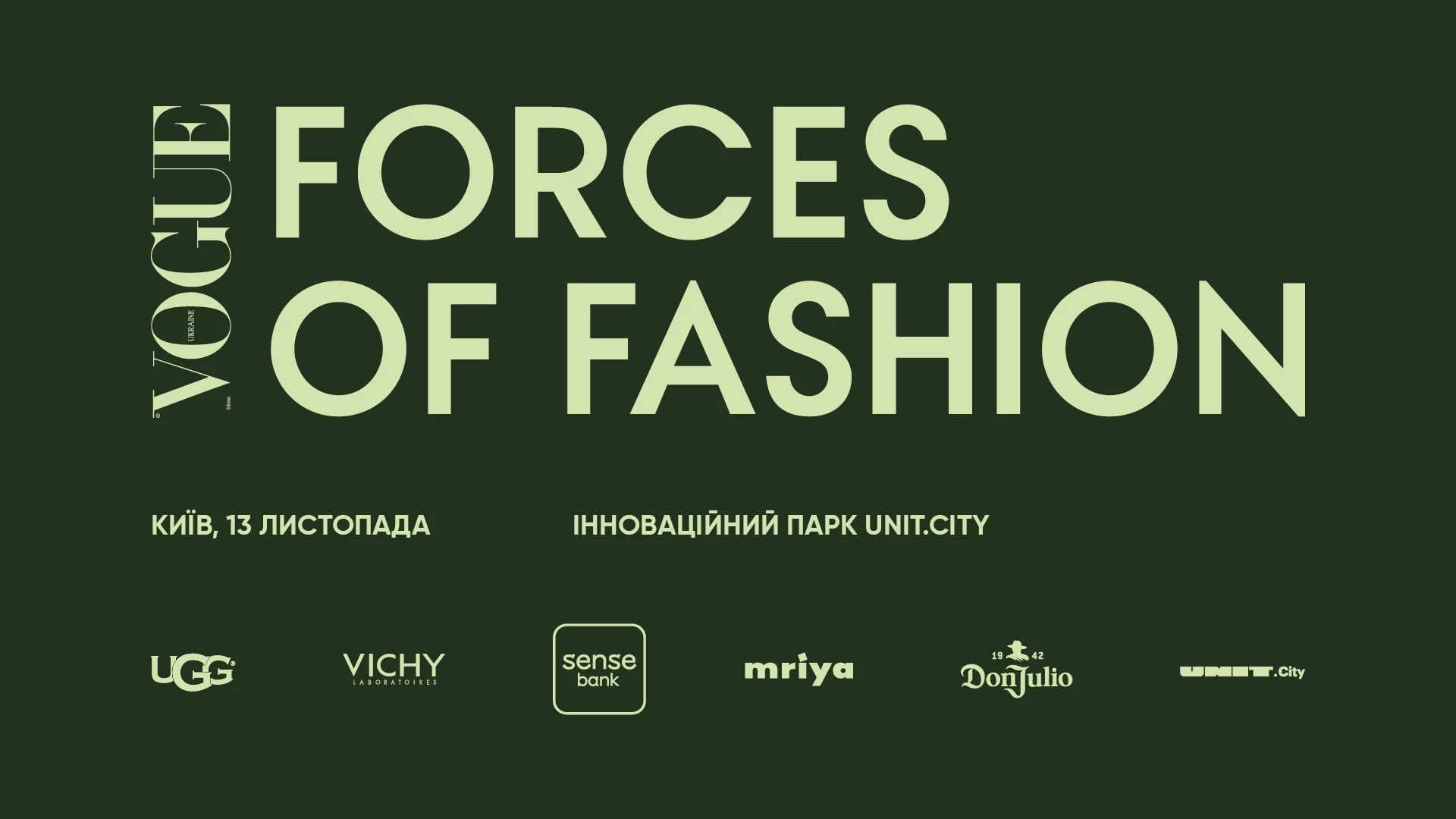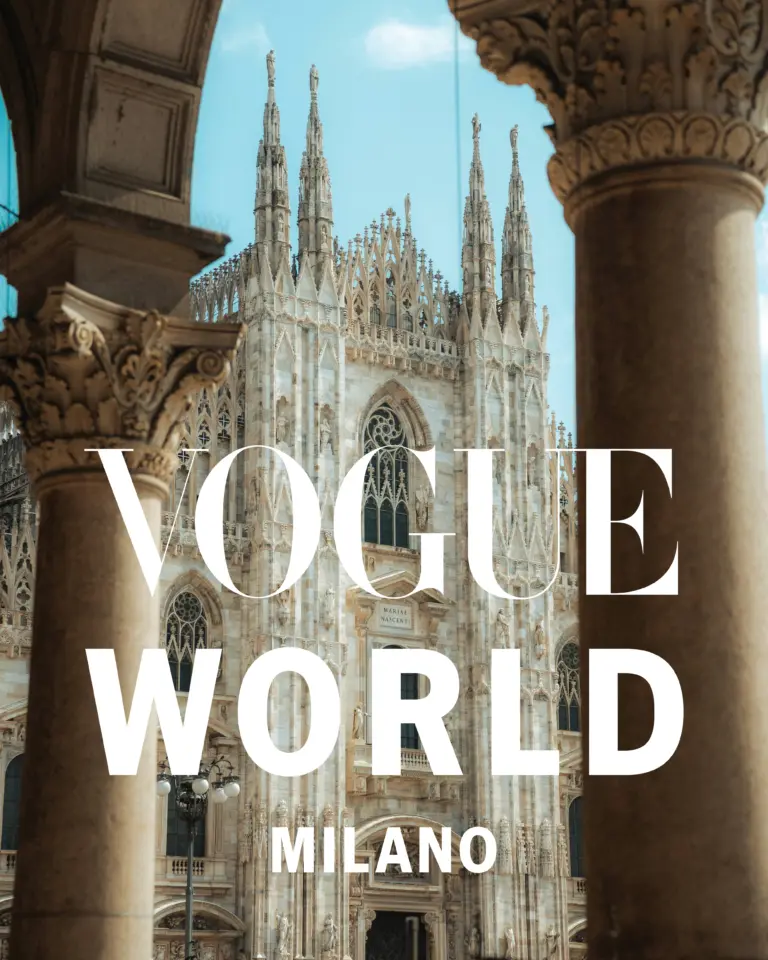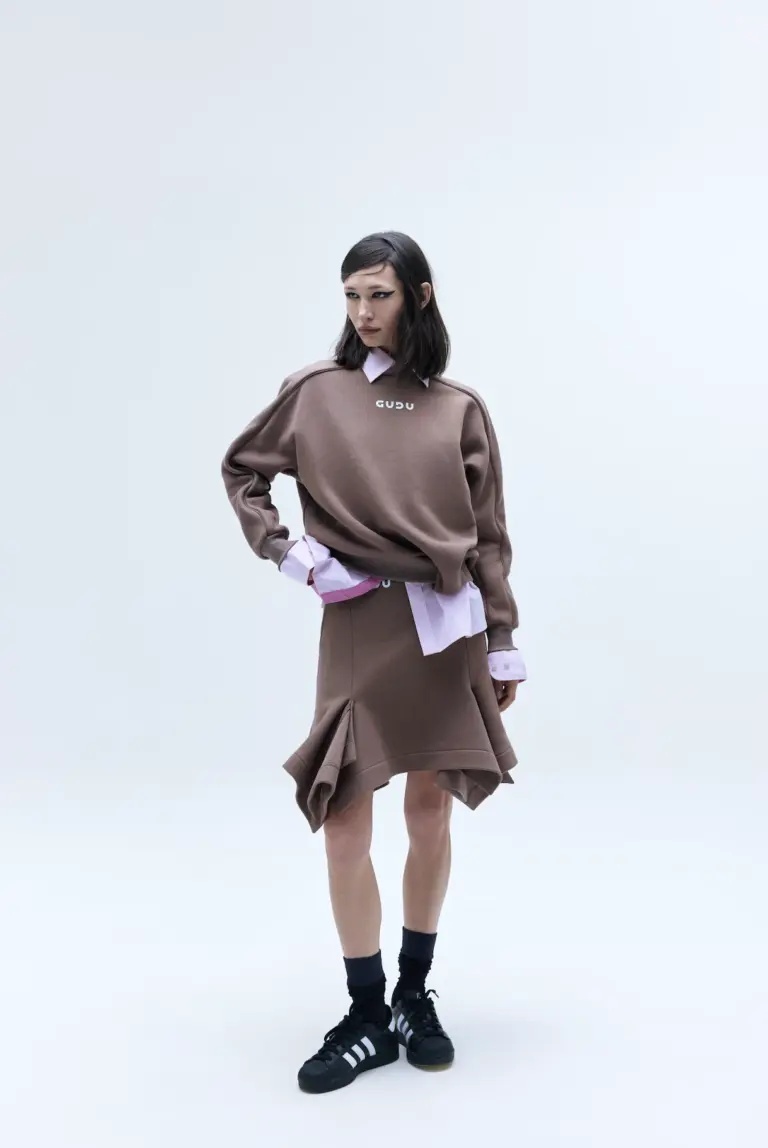On November 13th, Kyiv’s UNIT.City innovation hub will be the venue for the Vogue Ukraine Conference, an annual gathering of prominent figures from fashion, beauty, and tech, centered around discussions about the industry’s future. This year, the conference joins the global Forces of Fashion movement, championed by Anna Wintour and Condé Nast, signifying a fresh chapter for Vogue Ukraine as a global media presence.

The conference is evolving into a diverse forum to explore worldwide trends influencing current fashion: from the changes in retail and the reevaluation of luxury to the impact of emerging technologies on how we perceive beauty, style, and imagination.
This year’s speakers include Ashley McDonnell, an Irish entrepreneur, originator, and moderator of the Tech Powered Luxury podcast, in addition to being a co-founder of Ireland Fashion Week. As a graduate of the distinguished HEC Paris business school, she formerly worked at LVMH and Christian Dior, before taking up prominent roles at Google and the PUIG conglomerate. Presently, Ashley investigates how technology can bolster creativity, ethics, and the human element in fashion. Prior to the conference, she articulated why the industry’s trajectory hinges on the fusion of technological progress with genuine human principles.
 Ashley McDonnell
Ashley McDonnell
— In an era where tech companies possess the means to conceive, craft, and introduce their products to the market more rapidly than a traditional fashion house can produce a preliminary sketch, the central query is: who wields the true influence today – a brand steeped in history and legacy or algorithms?
Technology has rendered fashion swift, widely available, and highly competitive. All entities share equal footing in accessing artificial intelligence, automation, and analytics. Nevertheless, it is intrinsically human traits—ingenuity, instinct, the aptitude for feeling and empathy—that continue to elude replication by any program.
In a landscape where algorithms can foresee upcoming trends and artificial intelligence frameworks are capable of assembling an entire collection in mere minutes, the intrinsic worth will reside in attributes that defy numerical measurement: profound emotional resonance, authenticity, dependability, and congruent values. The distinctively human element and creative spark are what will forge fashion’s future. We are circling back to the genesis: where humanity serves as the principal fountainhead of inspiration.
— You’ve operated at the crossroads of fashion, luxury, and technology. What insights do you have into when innovation genuinely fosters brand advancement, versus when it merely becomes a tactic for projecting a contemporary image?
I have navigated innovation in its various forms – from those eliciting profound shifts, to those implemented solely for effect. Some technologies genuinely facilitate business growth: streamlining processes, championing sustainable practices, and improving product excellence and sales. Such remedies yield unmistakable outcomes and become integral to a brand’s essence. These represent innovations imbued with substance.
Conversely, there are those conceived principally for visual appeal. Such innovations may initially spark interest and transient hype, yet seldom offer enduring importance or real-world utility. Web3, the metaverse — these represent phases the fashion industry has progressed through, only for it to become evident that luxury brand clientele perceived no inherent necessity for them. They are not captivated by technology for its own sake — their appreciation lies in experience, emotions, and sensory perceptions.
When technology becomes a given, it is not about public pronouncements but rather the practical application. Fundamentally, genuine innovation does not revolve around grand concepts; instead, it focuses on basic solutions enhancing productivity. These might be minor, yet afford designers more time for cultivating concepts, as opposed to attending to spreadsheets or looming deadlines.
View this post on Instagram
— Given that algorithms and analytics are progressively molding individual tastes, how is the essence of luxury itself being reshaped? Is it becoming democratized, or, conversely, even more rarefied?
Luxury today transcends mere price or status; it has evolved into a lifestyle component. Individuals seek more than mere ownership; they crave a profound emotional connection with their possessions. Luxury surfaces when an experience stirs sentiment. This might be a pastry from Cédric Grolet in Paris, a pilgrimage to a cherished childhood locale, or the pioneering medical service offered by Neko Health in London.
Today’s luxury consumers are discerning, engaged, and bold enough to voice their convictions. They possess sophisticated tastes, disseminate experiences, and exert influence over brand strategies. As luxury becomes more accessible to a broader demographic, the very concept of “luxury” undergoes transformation. The emergence of “understated luxury” caters to those who favor quality without ostentation. Concurrently, a novel, transparent form of luxury arises through rentals, resale platforms, and responsible consumption. The imperative for brands and retailers now lies in leveraging technology to safeguard uniqueness while fostering closer engagement with their customer base.
— You’ve developed a syllabus addressing the convergence of luxury and technology, alongside partnering with designers for Ireland Fashion Week. In your estimation, what poses the foremost impediment to fashion brands genuinely embracing technology today – deficiencies in knowledge or rather ingrained mindsets?
In curating the Ireland Fashion Week program, our intent extended beyond conventional runway presentations, aiming instead to furnish designers with enhanced resources—access to the insight, instruments, and support essential for brand expansion. Our efforts yielded four distinct bootcamps.
The inaugural session centered on technology, hosted at Google’s EMEA headquarters. A subsequent exploration delved into the legal dimensions of fashion in conjunction with Taylor Wessing, dissecting considerations such as trademarks, copyright protections, and partnership agreements. The third bootcamp, entitled People & Planet, adopted the format of a lakeside retreat. The concluding module concentrated on communications, uniting stylists, creative directors, and the founder of Ireland’s premier influencer agency.
In addressing the adoption of technology and shifts in designers’ perspectives, we established a technology fund totaling over €7 million, facilitating complimentary entry to various platforms, inclusive of the Tailr precision sizing service, the HEURITECH trend forecasting system, and an array of alternatives. Although numerous independent and emerging designers grapple with knowledge gaps concerning contemporary technological tools, the paramount obstacle frequently stems from an inadequacy of capital to deploy them. Accordingly, we engineered partnerships with platforms to extend designers cost-free access to these solutions.
View this post on Instagram
— Luxury has always been about selling emotions, while technology has sold efficiency. What transpires when these disparate value systems converge?
Should technology fail to evoke affirmative emotions—be it astonishment, inquisitiveness, gratification, or a sense of jubilation—I hold the conviction that its role should be confined to a functional element within a brand or business infrastructure. For a considerable portion of today’s population, the true luxury lies in the capacity to disconnect. This phenomenon has already been witnessed with the decline of Web3 and the metaverse—at least within the sphere of luxury brands. Individuals harbor a deeper yearning for connection, closeness, and genuine interaction, rather than mere technological tools.
— We inhabit a realm where algorithms can anticipate preferences even before they materialize. Is fashion still capable of eliciting surprise?
I am persuaded that fashion, akin to numerous facets of life, operates cyclically. Shades, fabrics, silhouettes – all elements resurface, merely in revised interpretations. Through resources like HEURITECH, we gain the ability to promptly scrutinize antecedent trends and ascertain their ascent or descent in popularity, the geographic regions wherein they exert maximal influence, and even their potential resurgence timeline. Simultaneously – who could have foreseen the emergence of the Labubus trend? In fashion, room for surprises perpetually exists.
View this post on Instagram
BUY TICKETS FOR VOGUE UKRAINE CONFERENCE
CONFERENCE PARTNERS
Fashion partner: UGG, the iconic California label that redefined comfort as a style statement. UGG delivers unparalleled comfort and inspires countless individuals to embrace their true selves.
Advertising.
Alcoholic partner: Don Julio, a tequila marque steeped in history. Exceptional flavor and the essence of Mexican heritage encapsulated in each bottle.
Beauty partner: Vichy Laboratoires, a French dermocosmetic entity leveraging state-of-the-art innovations to provide cutting-edge resolutions for attaining healthy skin and hair.
Financial partner: Sense Bank, a state-owned establishment commanding leading positions throughout all echelons of the Ukrainian banking sector. Sense Bank proactively spearheads and underpins ventures across the landscape of visual, performing, musical, and cinematographic artistry.
Innovation Partner: Mriya Production, a Ukrainian tech firm specializing in the crafting of virtual environments tailored for videos, games, and global events.
Location: UNIT.City, Ukraine’s pioneering innovation hub conceived to bolster technological entrepreneurship and nascent startups, amalgamating office venues, laboratories, academic institutions, residential zones, and collaborative workspaces.







